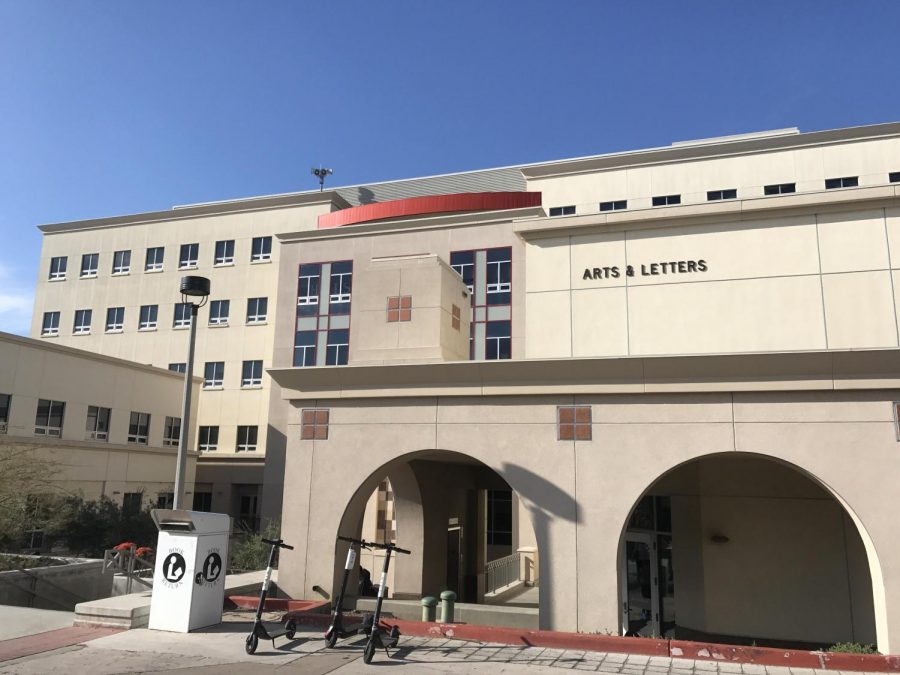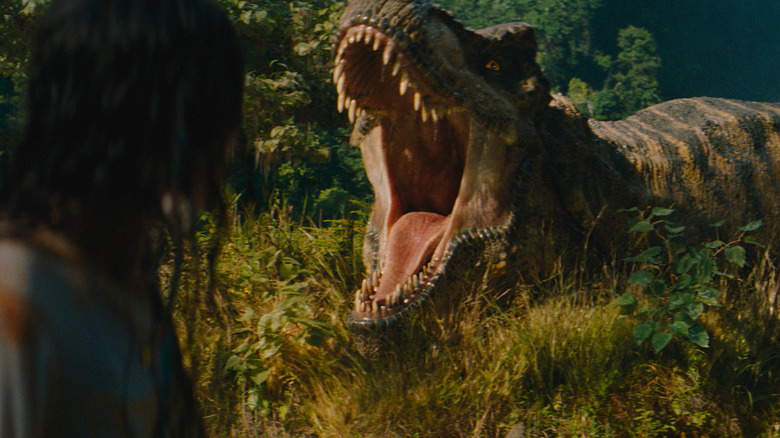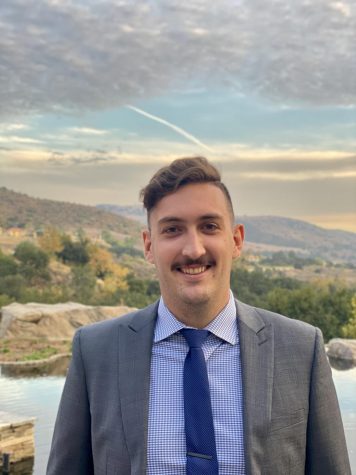The business of scaring people is very lucrative, and every year filmmakers, novelists and video game designers push the boundaries between captivating and disgusting audiences. However, no matter how gut-wrenching the material may be, people always seem to go back for more, unable to look away.
Dr. Andrew McClellan, the Stepsay Post Doctoral Fellow in Classics at San Diego State, discussed this phenomenon Thursday, March 14, kicking off a four-part lecture series presented by the Department of Classics and Humanities.
The series, entitled Mapping Monstrosity Across Time, Space and Media, affectionately referred to as “The Monster Mash” by organizers McClellan and Professor Raechel Dumas, will explore the enduring allure of horror and discuss the cultural politics of monsters through an interdisciplinary lens.
McClellan, whose background lies in studying the intersections of war, violence and death in Greco-Roman epic poetry and society, presented a broad survey of monsters in antiquity, drawing strong parallels among them and their modern cinematic relatives.
He made the case that horror and monsters have always held a special, terrifying place in human imagination, citing philosophers such as Plato, Aristotle and St. Augustine.
“I was surprised to find that ancient scholars, not just poets, articulated the appeal and appall of horror in a similar way that a modern psychologist or philosopher might,” McClellan said. “There is this recognition that something that is horrifying is also inherently alluring.”
To illustrate this point, McClellan played a clip from the 1981 werewolf horror film “The Howling,” something first-year French and English major Rhiannon Bill, also a fan of horror, found fascinating.
“I am so enthralled by the topic, and it was very cool that (McClellan) talked about mythology while tying it in with modern day horror,” Bill said. “All of the parallels he pointed out were very interesting.”
McClellan’s March 14 lecture introduced audiences to the historical context of horror, setting the stage for his colleagues’ lectures in the coming weeks.
On Thursday, March 28, at 2 p.m. in AL 101 professor of humanities Raechel Dumas will present on the monstrous-feminine in contemporary Japanese video games, followed by SDSU English professor Phillip Serrato on April 11, and the 25th Annual Adams Lecture in Humanities guest speaker, author Jesse Bullington on April 25.
While lectures like this provide audiences with an opportunity to learn about exciting topics and fields of study, the ultimate goal is to create discourse and foster insightful discussions.
This can sometimes prove challenging for speakers when translating large nebulous ideas into digestible talks tailored toward general audiences. When preparing to speak in a public forum, Dumas said she tries to relate to audiences through visual media and recognizable themes.
“I work on texts that most people are familiar with, but I also apply a dense theoretical perspective to them,” Dumas said. “When translating that into something for a more general audience, I like to focus on really common and recognizable images and tropes.”
Each lecture, while focusing on monsters and horror, is unique and designed to stand apart from one another. To hear firsthand how horror is made, audiences can look forward to fantasy and science fiction author Jesse Bullington’s lecture on monsters as a mirror of humanity on Thursday, April 25.
“The three of us speaking first are all scholars,” Dumas said. “We’re academics who focus on the dark dimension of culture as analysts. In our final talk, Jesse Bullington will speak to the process as a writer, as well as a voracious consumer of genre literature. He will talk about what he thinks when he develops monstrous characters.









